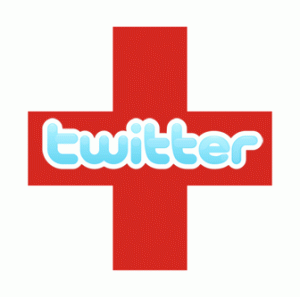 As America faces two consecutive devastating hurricanes, Harvey and Irma, social media is full of posts. The same is true for terrorist incidents such as the recent attacks in Manchester, England. Social media can provide valuable information and help to raise awareness of victims’ needs. Twitter, in particular, is helpful for providing real time information.
As America faces two consecutive devastating hurricanes, Harvey and Irma, social media is full of posts. The same is true for terrorist incidents such as the recent attacks in Manchester, England. Social media can provide valuable information and help to raise awareness of victims’ needs. Twitter, in particular, is helpful for providing real time information.
Yet there’s a dark side to the roles played by Twitter and other social media sites during such events. In some cases, the hyper focusing on traumatic events makes it even harder for victims. Misinformation can put people in more danger. Finally, trolls and dishonest people can exploit victims. Let’s look at some of the pros and cons of social media during disasters.
The Pros: the Positive Role of Twitter During Catastrophic Events
There’s little doubt that Twitter, Facebook and other social media sites can be helpful during disasters. When it comes to natural disasters that can be predicted in advance, such as hurricanes, social media is a useful tool for sharing warnings and up-to-date information. The path of a storm can change rapidly and Twitter is a useful vehicle for keeping everyone updated. This is especially true in an age when fewer people tune into traditional news sources such as newspapers, TV and radio. It’s also easier to access social media than conventional news sources during power outages.
People following Twitter on their mobile phones and other devices can learn about evacuation warnings and the specific path a storm is taking. Because tweets are broadcast in real time, you can get instant reports from people in affected areas as well as the latest announcements from authorities. Some types of disasters, such as floods, can create diverse conditions from place to place. A certain road, for example, can quickly become flooded and deadly. Twitter is a good way to convey such vital information instantly.
There are also many disasters that can’t be predicted. This includes earthquakes as well as terrorist attacks. In such cases, social media can still be very helpful for sharing information about where victims can go for assistance. Afterwards, people can be told how to contribute to relief funds to aid victims. Twitter can advise people where to send money and supplies to victims and charitable organizations. Social media can also contribute to a sense of community, letting victims know that other people are thinking about them and want to help.
The Cons: How Social Media Harms Victims and Relief Efforts
As helpful as social media often is during catastrophes, there are also drawbacks. For one thing, not all information shared on Twitter and other sites is accurate. Social media is a fertile ground for unfounded rumors as well as facts. In the case of natural disasters, this can be dangerous. For example, if someone starts an inaccurate rumor that a storm is blowing out to sea, residents of a coastal area may feel safe. If this turns out to be false, people’s lives can be endangered. The point to keep in mind is that you shouldn’t believe every social media post you see. Always confirm everything.
There’s also the problem of people with less than honorable intentions. Trolls can make cruel and insensitive comments during the most challenging times. Perhaps even worse are people who try to cash in on others’ misfortune. Social media is an efficient way to raise money for legitimate charities but it’s also a way for con artists to collect funds fraudulently. Of course, this kind of problem has been occurring since long before the internet. It’s just that Twitter and Facebook make it especially convenient for such hucksters to raise money quickly with posts containing links to payment sites. This is another case where you should check out the credentials of a charity before donating your money.
Finally, there’s the psychological toll that the internet and social media, in particular, can take on people experiencing traumatic events. According to some experts, people who have experienced trauma should avoid social media. That’s because getting saturated with photos and disturbing facts can magnify your own stress.
How to Make the Most of Twitter During Catastrophic Events
As with everything, Twitter and other social media sites can be both helpful and harmful before, during and after catastrophes. In the digital age, there’s no escaping this reality so we have to take the bad with the good. There are certain ways that we can emphasize the positive and minimize the negative effects.
- Get information from a variety of sources. Twitter is very efficient for real time information but don’t count on it exclusively. Be especially wary of tweets containing reports that sound unlikely or that contradict official information. Remember, anyone with a Twitter or Facebook account can say anything. That doesn’t make it true.
- Always research charities and relief efforts. It’s great to donate and help out after a disaster but be careful where you send your money. There are ways to verify the validity of charities. Don’t simply click on links to donate funds as some of these may be dishonest sites.
- Help to crack down on trolling. Twitter has recently announced measures to reduce trolling and harassment. Twitter users can also do their part by managing their settings. For example, you can now mute users who don’t have a profile picture. It’s also important to block and report trolls, especially those who prey on people during disasters.
- Relief organizations and volunteers can use Twitter to communicate more efficiently with one another and with disaster victims. This can be useful for coordinating relief efforts and identifying the areas of greatest need.
Overall, Twitter and other social media sites are a positive presence that can help during all stages of catastrophes. There will always be misinformation and those who use these tools for nefarious purposes. However, if users are careful and discerning, they can gain the benefits of social media and avoid many of the potential pitfalls.

